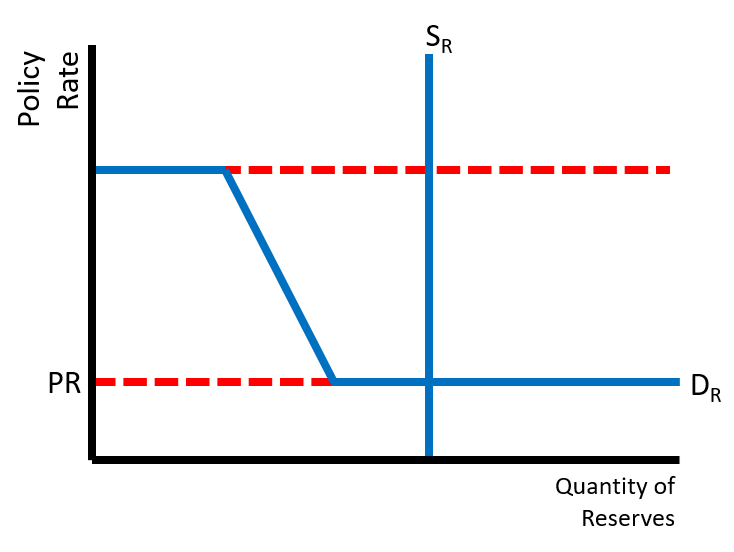Monetary policy is used to achieve:
- Stable prices
- Full employment
- Economic growth
They change interest rates, which impact gross investment, aggregate demand, the price level, and real output.
Scarce vs Ample Reserves
Reserves are the funds that banks have available to them. Required reserves are those that a bank cannot loan out, while excess reserves are those that can be loaned out. Reserves are a part of the monetary base (MO) but they are not money.
Scarce reserves are limited reserve systems that use the Money Market Graph to understand how the federal reserve changes interest rates. However, the ample reserve system uses a different graph: the Reserves Market Graph.
Scarce Reserves
Scarce Reserves are when central banks target their policy rate through changes in the money supply. The policy rate (known as the Federal Funds Rate in the US) is the interest rate that banks charge each other.
There are three tools within a scarce reserve system:
- Discount Rate The interest rate that the central bank charges banks for overnight loans. An increase in the discount rate will lead to a leftward shift of the money supply curve.
- Reserve Requirement The reserve requirement is the percentage of checkable deposits. An increase in the reserve requirement leads to less loans which leads to a leftward shift of the money supply.
- Open Market Operations Open market operations refer to the buying or selling of government bonds. If the government sells bonds, there is a leftward shift of the money supply.
If the government wants to fight inflation. they will use contractionary monetary policy: raising the discount rate, raising the reserve requirement, or having an open market sale of government bonds. All of these lead to a decrease in money supply and capital, corresponding with a leftward shift of the aggregate demand curve.
Ample Reserves
The ample reserve graph has policy rate on the y-axis and quantity of reserves on the x-axis. Banks will demand reserves when they wish to borrow funds from the central bank or other banks.
- The graph is flat on top as there is an upper bound (Discount Rate) because banks will never borrow at a rate higher than the discount rate as that is the interest rate that the federal reserve offers.
- Following this, we have a downward sloping section of the demand curve because: an increase in the policy rate means banks will deserve less reserves, and a decrease in the policy rate means banks will demand more reserves.
- Finally, we have another flat section of the curve which is the lower bound (Interest on Reserves Rate) because this is the interest rate that the Federal Reserve pays the banks on their reserve balances. This process of lifting and flattening the ample reserve curve is known as arbitrage.

Supply of Reserves
The supply of reserves is controlled by the Central Bank and it is not affected by the policy rate. Open market purchases will shift the supply reserves right, and open market sales will shift the supply of reserves curve left.
The policy rate is found at the intersection between the demand curve and the supply curve, and it is the federal funds rate which is the interest rate that banks charge each other.

When supply intersects the demand curve at the downward sloping section of the demand curve, there are scarce reserves. Here open market operations can change the policy rate. However, when we are at an ample reserve section of the demand curve, open market operations will not have an impact on the interest rates.
The tools that can be used by a central bank with an ample reserve system are:
- Open Market Operations
- Used to maintain ample reserves
- Administered Rates (by Central Bank)
- Discount Rate
- Interest on Reserves